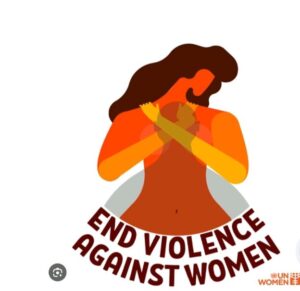By Chimereogo Ukpaka and Cecilia Uzoigwe
Gender violence remains one of the most pervasive issues globally, affecting millions of people across cultures, social classes and geographic locations. It spans various forms, including domestic abuse, sexual assault, harassment, and harmful traditional practices. At its core, gender violence stems from inequality, discrimination, and power imbalances that allow violence to thrive in silence. However, efforts to combat gender violence have grown in both strength and scope, as societies have begun to recognize that silence is no longer an option.
The root cause of gender violence in Nigeria is deeply rooted in patriarchal cultural norms, gender inequality, and socioeconomic factors. Traditional beliefs in Nigeria place men in dominant positions, while women are often expected to be submissive, leading to practices where gender violence, especially domestic abuse, is normalized. Women and girls are sometimes seen as properties, and their rights are often undermined by these societal norms. Widespread gender discrimination limits women’s access to education, economic opportunities and political participation, leaving them economically dependent on men and making it harder for them to escape abusive relationships.
Gender violence refers to harmful acts directed at individuals based on their gender. It can take many forms, ranging from physical violence, like domestic abuse and sexual assault, to psychological and emotional violence, like intimidation, manipulation, and control. In many cases, it disproportionately affects women and gender minorities, although anyone can be a victim of gender-based violence. The roots of gender violence are deeply intertwined with societal norms that perpetuate power imbalances, such as patriarchy, sexism, and discriminatory practices. These social structures foster environments where violence is often normalized or dismissed, making it difficult for survivors to come forward. Silence is reinforced through fear, shame, cultural taboos, and even legal barriers.
One of the most critical steps in the fight against gender violence is breaking the chain of silence that often surrounds it. This silence manifests in various ways: victims remain silent out of fear of retaliation, societal judgment, or a lack of resources. In some cases, perpetrators may remain unchallenged because of a culture that minimizes or ignores the severity of gender violence.
The courage of survivors to share their stories is vital to breaking the silence. Through advocacy, support networks, and public awareness campaigns, society can foster a culture of openness. Initiatives like #MeToo and Time’s Up have empowered countless individuals to step forward, share their experiences, and demand change. When survivors speak out, they not only heal themselves but also provide strength and validation to others suffering in silence.
Breaking the silence is not just about raising awareness, it’s also about creating an environment where survivors feel safe to speak. Legal frameworks must evolve to offer better protection to those affected by gender violence. This includes enforcing stricter laws against perpetrators, providing accessible reporting mechanisms, and offering shelters and support for victims. Governments and institutions need to actively work to create a justice system that is survivor centered and focuses on accountability and restorative practices.
Another crucial element in breaking the silence around gender violence is challenging and changing harmful cultural attitudes. Gender violence is often tolerated because of ingrained societal beliefs that perpetuate gender inequalities. Public education, community based programs, and media campaigns can all play a pivotal role in reshaping attitudes. Teaching respect, equality, and non-violence from a young age can significantly reduce the normalization of abuse and foster healthier relationships in the future.
Men and boys must be active participants in the fight against gender violence. Often, they are either the perpetrators or silent by-standers. Engaging men and boys in conversations about masculinity, respect, and consent can help shift harmful behaviors and beliefs. Men must be educated about the impact of gender violence and encouraged to speak out when they witness or suspect abuse. The message needs to be clear, gender violence is not just a “women’s issue” it is a human rights issue that requires collective responsibility.
Communities play a crucial role in breaking the silence surrounding gender violence. They can offer direct support to survivors, provide safe spaces for victims to report violence, and hold perpetrators accountable. Social workers, healthcare providers, educators, and community leaders must collaborate to create a robust support network for survivors.
Additionally, organizations that provide legal aid, counseling, and shelter are often the lifeline that helps individuals escape abusive situations. Community leaders and activists can also help shift public perception. It is not enough to simply condemn violence after it occurs; communities must be proactive in preventing it, by challenging harmful gender norms and promoting gender equality, communities can build a foundation for lasting change.
While significant strides have been made in raising awareness about gender violence, much work remains. Governments, organizations, and individuals must continue to push for greater legal protections, increased funding for support services, and stronger public education campaigns. The fight against gender violence will require a sustained commitment to creating a society that values equality, justice, and respect for all. Breaking the chain of silence is not a single moment but a process, a continuous effort that requires the collective will of society. We must dismantle the structures that allow violence to persist in silence and build a world where survivors are heard, supported, and empowered to reclaim their lives. Only then can we hope to create a future free from gender-based violence.
